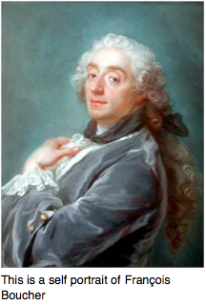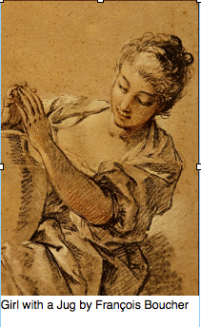Initial Reaction
My initial reaction to this sculpture was that this piece was confusing but it drew my attention because I wanted to understand why Marcel Duchamp used these objects in this manner. I wanted to know why these objects were placed in a bird cage. I was confused about the cuttlebone sticking out from the bird cage. I thought that Duchamp used marble cubes resembling sugar cubes to show that things aren’t always as they seem. I thought that this made a comment on society saying that you should not judge others.
Analysis and Interpretation
This sculpture is a “readymade” sculpture. A “readymade” is a sculpture made of manufactured objects. Marcel Duchamp called it an “assisted Readymade” because he had to cut the marble and alter it. There are cubes of marble that resemble sugar cubes. As well, there is a thermometer to distinguish between the temperature of the warm sugar cubes and the cold marble cubes. The cuttlebone and wooden perches are in the cage to reassure people that it is a bird cage. Since the marble looks like a sugar cube, people pick it up expecting it to be light but it is really heavy. Duchamp named this piece Why Not Sneeze…? because sneezing is an involuntary thing and peoples reactions to this piece of art are unpredictable and involuntary.
Marcel Duchamp used different Elements and Principles of Design in this piece. He used form in the marble to make them resemble sugar cubes. There is colour because he also painted them white to help make them look like sugar cubes so that people will think that the sculpture is light. There is line in the bars of the cage. There is unity because everything is in the cage. There is a smooth texture to the marble and rough texture to the bars of the cage.
Cultural Context
Marcel Duchamp made this sculpture in 1921 for a woman named Dorothy Dreier. In the 1920’s in America it was a happy time and there was freedom because World War 1 was over. America was the centre of the world. He was trying to sYou’re really in a cage and life is not all sweet like people thought in the 20’s but rather life is cold like marble. A cage shows restriction of freedom and Duchamp is saying that we are not fully free and we are restricted. As well, Marcel Duchamp was influenced by other artists such as Pablo Picasso and Henri Matisse. He did not just want his work to be just visual but he wanted people to be confused about the work and try to figure out the meaning. He used a girls name in the title because this piece is made for a girl. As well, he added an extra r to the name because he wanted people to be confused. Some people think of this sculpture as having a sexual meaning but the sexual meaning is not flattering towards women because it appears as something light and sweet because of the sugar cubes but it is actually heavy because of the marble.
Aesthetic Judgement
I think that this piece is successful in the sense that it is very interesting and lets people think about the meaning of the piece and the message that the artist was trying to convey. It lets people interpret the piece in any way that they want.
Sources:
http://en.wikipedia.org/wiki/Why_Not_Sneeze,_Rose_Sélavy%3F
http://www.toutfait.com/unmaking_the_museum/why%20not%20sneeze.html





